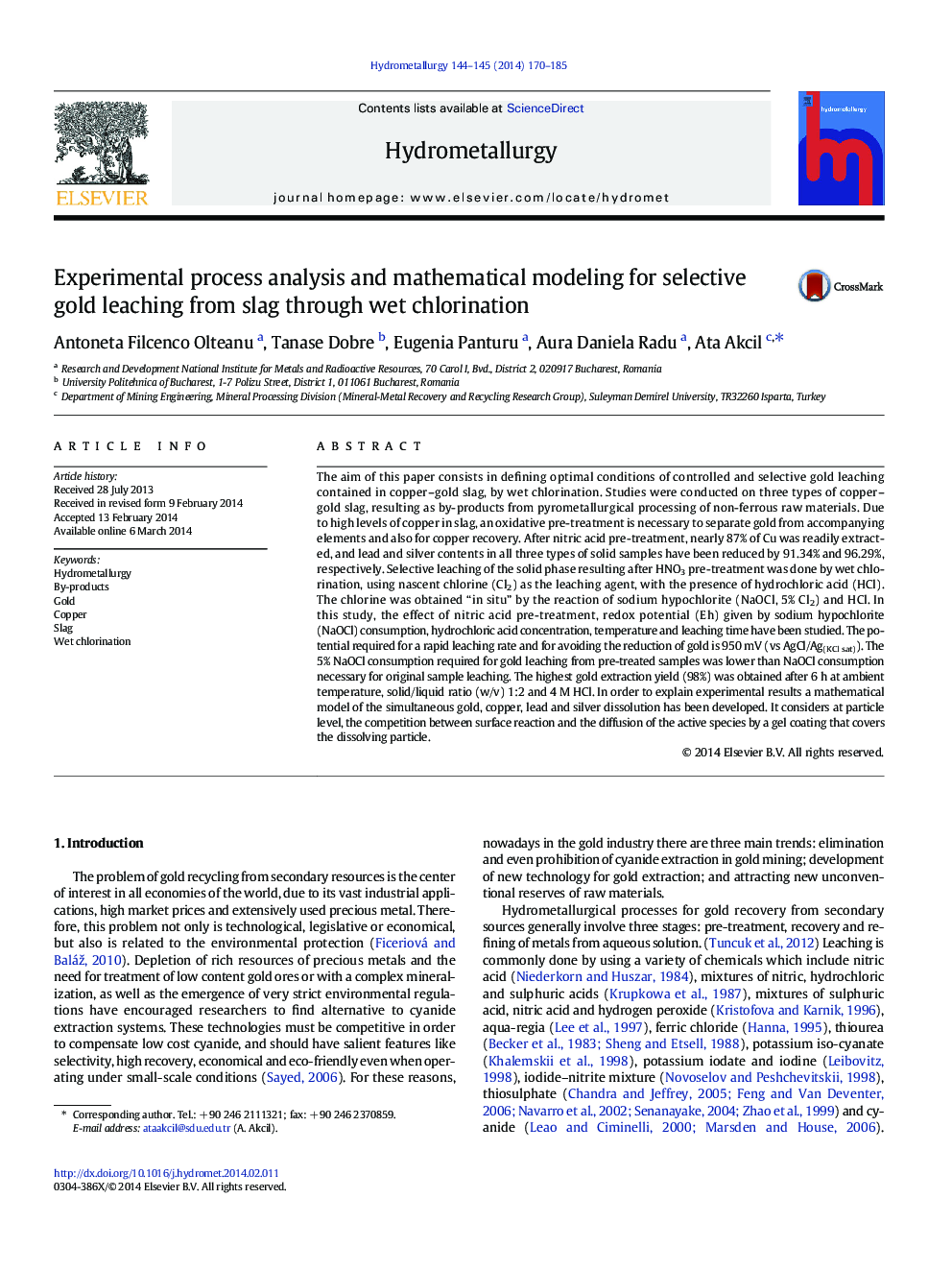| کد مقاله | کد نشریه | سال انتشار | مقاله انگلیسی | نسخه تمام متن |
|---|---|---|---|---|
| 212212 | 462036 | 2014 | 16 صفحه PDF | دانلود رایگان |
• Selective gold leaching contained in copper - gold slag, by wet chlorination.
• 87% Cu were readily extracted through nitric acid pre-treatment.
• HNO3 pre-treatment reduces NaOCl consumption and increasing gold extraction yield.
• The highest gold extraction yield (98%) was obtained using Cl2 in presence of HCl.
• Mathematical model of the simultaneous gold, copper, lead and silver dissolving.
The aim of this paper consists in defining optimal conditions of controlled and selective gold leaching contained in copper–gold slag, by wet chlorination. Studies were conducted on three types of copper–gold slag, resulting as by-products from pyrometallurgical processing of non-ferrous raw materials. Due to high levels of copper in slag, an oxidative pre-treatment is necessary to separate gold from accompanying elements and also for copper recovery. After nitric acid pre-treatment, nearly 87% of Cu was readily extracted, and lead and silver contents in all three types of solid samples have been reduced by 91.34% and 96.29%, respectively. Selective leaching of the solid phase resulting after HNO3 pre-treatment was done by wet chlorination, using nascent chlorine (Cl2) as the leaching agent, with the presence of hydrochloric acid (HCl). The chlorine was obtained “in situ” by the reaction of sodium hypochlorite (NaOCl, 5% Cl2) and HCl. In this study, the effect of nitric acid pre-treatment, redox potential (Eh) given by sodium hypochlorite (NaOCl) consumption, hydrochloric acid concentration, temperature and leaching time have been studied. The potential required for a rapid leaching rate and for avoiding the reduction of gold is 950 mV (vs AgCl/Ag(KCl sat)). The 5% NaOCl consumption required for gold leaching from pre-treated samples was lower than NaOCl consumption necessary for original sample leaching. The highest gold extraction yield (98%) was obtained after 6 h at ambient temperature, solid/liquid ratio (w/v) 1:2 and 4 M HCl. In order to explain experimental results a mathematical model of the simultaneous gold, copper, lead and silver dissolution has been developed. It considers at particle level, the competition between surface reaction and the diffusion of the active species by a gel coating that covers the dissolving particle.
Journal: Hydrometallurgy - Volumes 144–145, April 2014, Pages 170–185
